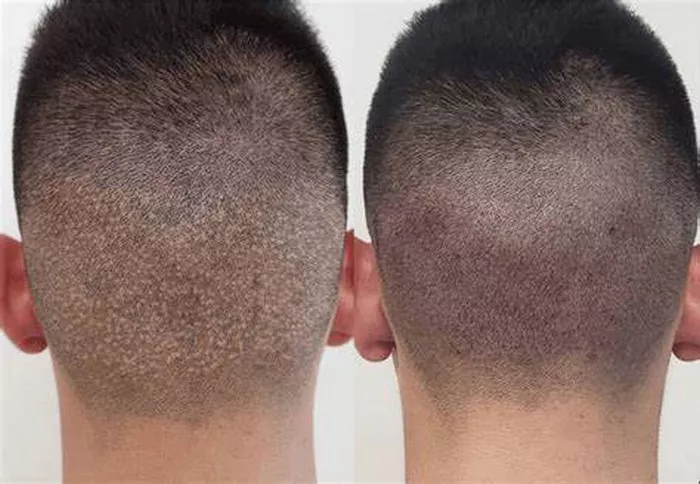Hair loss is a common concern that affects millions of people worldwide. As a result, hair transplant procedures have gained significant popularity as a solution for restoring lost hair. However, many potential patients are often taken aback by the high costs associated with these procedures. This article will delve into the reasons behind the expense of hair transplants, exploring factors such as technology, expertise, and individual patient needs.
What Is a Hair Transplant?
Overview of the Procedure
A hair transplant is a surgical procedure that involves moving hair follicles from a donor site—typically the back or sides of the head—to an area experiencing thinning or baldness. The two main techniques used in hair transplants are:
Follicular Unit Transplantation (FUT): Involves removing a strip of skin containing hair follicles and transplanting them into the balding area.
Follicular Unit Extraction (FUE): Involves extracting individual hair follicles directly from the scalp and transplanting them.
Both methods have their pros and cons, but they share a common goal: to restore hair and improve aesthetic appearance.
Factors Contributing to the Cost of Hair Transplants
1. Surgical Expertise and Experience
The Importance of Qualified Surgeons
One of the primary reasons hair transplants are costly is the level of expertise required. Qualified surgeons who specialize in hair restoration undergo extensive training and have years of experience. The cost of the procedure often reflects the surgeon’s skill and reputation.
The Role of a Medical Team
A hair transplant is not just a solo endeavor; it involves a dedicated team of medical professionals, including anesthetists, nurses, and surgical technicians. The collective expertise of the team contributes to the overall cost of the procedure.
2. Technology and Equipment
Advanced Surgical Techniques
Modern hair transplant techniques require advanced technology and equipment. For example, FUE uses specialized tools to extract hair follicles, and the precision involved in these procedures can significantly affect the cost.
Medical Facilities and Standards
The setting in which the procedure takes place also influences the price. High-quality clinics that meet stringent medical standards often charge more due to better facilities, equipment, and hygiene practices.
3. Geographic Location
Regional Pricing Variations
The cost of hair transplants can vary significantly depending on geographical location. Urban centers or areas with a high cost of living may charge more for hair restoration services compared to rural settings.
Local Competition
In regions with multiple clinics, competition may drive prices down. Conversely, in areas with limited options, clinics may charge a premium.
4. Number of Grafts Required
Understanding Hair Density Needs
The total cost of a hair transplant is often based on the number of grafts required for the procedure. Patients with more extensive hair loss will need more grafts, leading to higher costs.
Customization of Treatment Plans
Every patient has unique hair loss patterns and goals, necessitating personalized treatment plans. Customization can lead to variations in pricing, depending on the complexity of the procedure.
5. Post-Operative Care
Importance of Follow-Up Treatments
Aftercare is crucial for successful hair transplants. Patients may require follow-up treatments, such as medications, scalp care products, or additional procedures, which can add to the overall expense.
Consultation and Assessment Fees
Initial consultations often come with fees that may not be included in the overall transplant price. These assessments are vital for determining the best approach for each patient.
Additional Considerations
1. Non-Surgical Alternatives
While hair transplants are effective, there are non-surgical alternatives available, such as hairpieces, medications (like minoxidil), and laser therapy. However, these options can also vary in price, and their long-term effectiveness may not match that of surgical solutions.
2. Financing Options
Payment Plans and Loans
Many clinics offer financing options to make hair transplants more accessible. Patients can explore payment plans or medical loans to cover the upfront costs, easing the financial burden.
3. Long-Term Investment
The Value of Permanent Solutions
Hair transplants can be seen as a long-term investment in one’s appearance and confidence. Unlike temporary solutions, transplanted hair is typically permanent and grows naturally, offering significant value over time.
4. Psychological Benefits
Impact on Self-Esteem
The psychological benefits of restoring one’s hair can be profound. Many patients report increased self-esteem and improved quality of life post-procedure, making the cost more justifiable.
Conclusion
The high cost of hair transplants is influenced by a multitude of factors, including the expertise of the medicalteam, advanced technology, geographical location, and the individual needs of patients. Understanding these elements can help prospective patients appreciate the investment required for such a transformative procedure.
Ultimately, hair transplants offer a lasting solution to hair loss, with benefits that extend beyond mere aesthetics. As patients weigh their options, considering both the financial and emotional aspects of the investment can lead to a more informed decision. For those seeking a reliable and effective method of restoring their hair, the cost may well be worth the outcome.
Related topics:
- Why Do Hair Transplants Look Fake? Understanding the Factors
- When Can I Go to the Gym After Hair Transplant
- How Many Days for Hair Transplant


